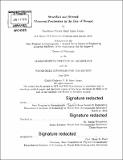| dc.contributor.advisor | Amala Mahadevan. | en_US |
| dc.contributor.author | Spiro Jaeger, Gualtiero Victor Rudi. | en_US |
| dc.contributor.other | Joint Program in Oceanography/Applied Ocean Science and Engineering. | en_US |
| dc.contributor.other | Massachusetts Institute of Technology. Department of Earth, Atmospheric, and Planetary Sciences. | en_US |
| dc.contributor.other | Woods Hole Oceanographic Institution. | en_US |
| dc.coverage.spatial | ab-----i------ | en_US |
| dc.date.accessioned | 2019-09-26T21:00:01Z | |
| dc.date.available | 2019-09-26T21:00:01Z | |
| dc.date.copyright | 2019 | en_US |
| dc.date.issued | 2019 | en_US |
| dc.identifier.uri | https://hdl.handle.net/1721.1/122332 | |
| dc.description | Thesis: Ph. D., Joint Program in Oceanography/Applied Ocean Science and Engineering (Massachusetts Institute of Technology, Department of Earth, Atmospheric, and Planetary Sciences; and the Woods Hole Oceanographic Institution), 2019 | en_US |
| dc.description | Cataloged from PDF version of thesis. | en_US |
| dc.description | Includes bibliographical references (pages 113-121). | en_US |
| dc.description.abstract | Submesoscale ocean dynamics and instabilities, with characteristic scales 0.1-10 kin, can play a critical role in setting the ocean's surface boundary layer thickness and associated density stratification. Submesoscale instabilities contribute to lateral stirring and tracer dispersal. These dynamics are investigated in the Bay of Bengal, motivated by the upper ocean's potentially coupled interactions with Monsoon winds and convection. The region's excess precipitation and runoff generates strong salinity gradients that typically set density fronts and stratification in the upper 50 m. Since we cannot synoptically measure currents containing fast-evolving and oscillating components across the submesoscale range, we instead analyze passive tracer distributions (spice = density-compensated temperature (T) and salinity (S) anomalies), identifying signatures of flows and testing dynamical theories. | en_US |
| dc.description.abstract | The analysis is based on over 9000 vertical profiles of T and S measured along ~4800 km of ship tracks in the Bay of Bengal during ASIRI and MISO-BOB expeditions in 2013, 2015, and 2018. Observations in the surface mixed layer reveal ~1 km scale-selective correlation of surface T and S, with compensation reducing cross-front density gradients by ~50%. Using a process study ocean model, we show this is caused by submesoscale instabilities slumping fronts, plus surface cooling over the resultant enhanced salinity stratification, potentially thwarting the forward cascade of energy. In the stratified interior, we present a spectral analysis of horizontal spice variance statistics from wavenumber k ~0.01 cpkm to ~1 cpkm. At scales <10 km, stratified layers that are closer to the surface exhibit redder passive tracer spectra (power spectra k⁻³, gradient spectra k⁻¹) than predicted by quasi-geostrophic or frontogenetic theories. | en_US |
| dc.description.abstract | Complimentary observations reveal spice patterns with multiple, parallel, ~10 m thin layers, crossing isopycnals with O(10⁻⁴) slopes, coherent over at least 30-80 kin, with coincident layers of stratification anomalies. Comparison with shear measurements, and a numerical process study, suggest that both submesoscale sheared eddies, and thin near-inertial waves, form such layers. Fast formation timescales and large aspect ratios suggest they enhance horizontal mixing by shear dispersion, reducing variance at ~1-10 km scales. | en_US |
| dc.description.statementofresponsibility | by Gualtiero Victor Rudi Spiro Jaeger. | en_US |
| dc.format.extent | 121 pages | en_US |
| dc.language.iso | eng | en_US |
| dc.publisher | Massachusetts Institute of Technology | en_US |
| dc.rights | MIT theses are protected by copyright. They may be viewed, downloaded, or printed from this source but further reproduction or distribution in any format is prohibited without written permission. | en_US |
| dc.rights.uri | http://dspace.mit.edu/handle/1721.1/7582 | en_US |
| dc.subject | Joint Program in Oceanography/Applied Ocean Science and Engineering. | en_US |
| dc.subject | Earth, Atmospheric, and Planetary Sciences. | en_US |
| dc.subject | Woods Hole Oceanographic Institution. | en_US |
| dc.subject.lcsh | Oceanography. | en_US |
| dc.subject.lcsh | Winds. | en_US |
| dc.subject.lcsh | Salinity. | en_US |
| dc.subject.lcsh | Oceanic mixing. | en_US |
| dc.title | Stratified and stirred : monsoon freshwater in the Bay of Bengal | en_US |
| dc.title.alternative | Monsoon freshwater in the Bay of Bengal | en_US |
| dc.type | Thesis | en_US |
| dc.description.degree | Ph. D. | en_US |
| dc.contributor.department | Joint Program in Oceanography/Applied Ocean Science and Engineering | en_US |
| dc.contributor.department | Massachusetts Institute of Technology. Department of Earth, Atmospheric, and Planetary Sciences | en_US |
| dc.contributor.department | Woods Hole Oceanographic Institution | en_US |
| dc.identifier.oclc | 1119388841 | en_US |
| dc.description.collection | Ph.D. Joint Program in Oceanography/Applied Ocean Science and Engineering (Massachusetts Institute of Technology, Department of Earth, Atmospheric, and Planetary Sciences; and the Woods Hole Oceanographic Institution) | en_US |
| dspace.imported | 2019-09-26T20:59:59Z | en_US |
| mit.thesis.degree | Doctoral | en_US |
| mit.thesis.department | EAPS | en_US |
